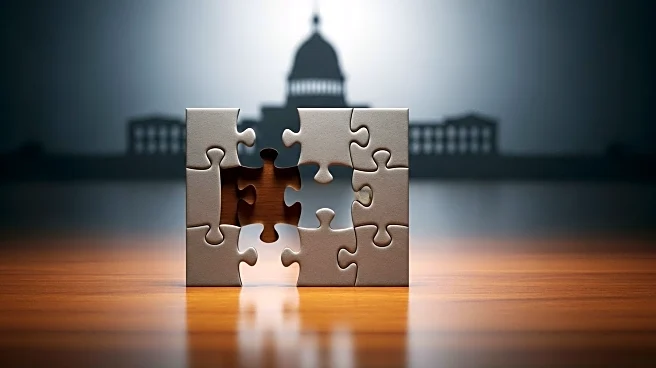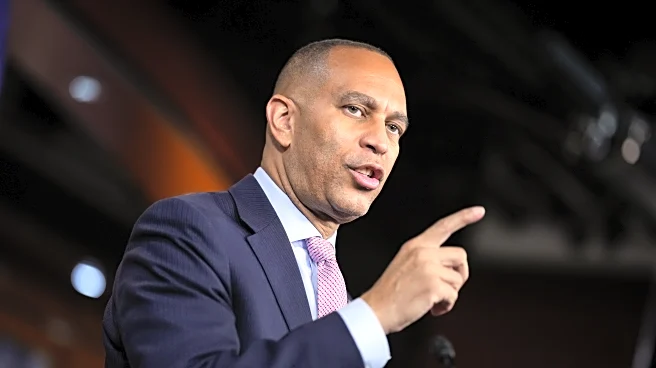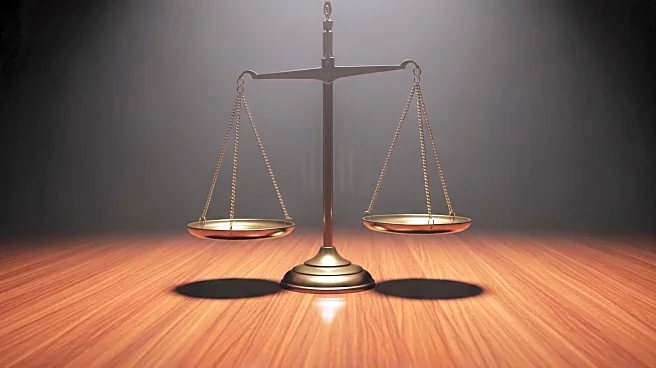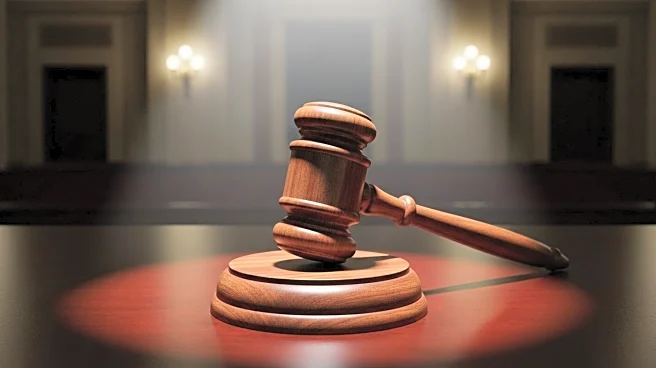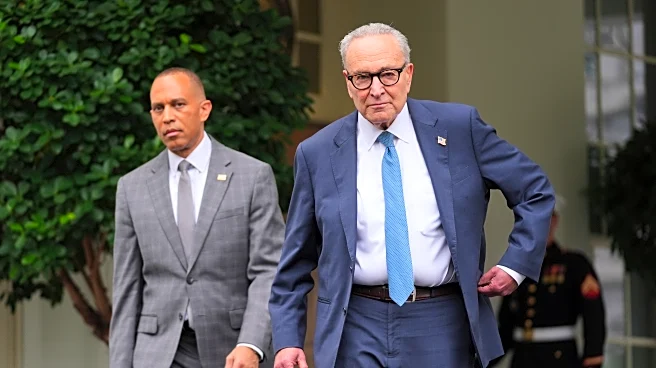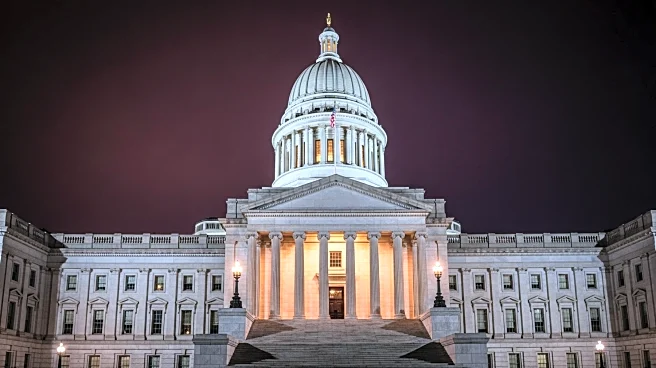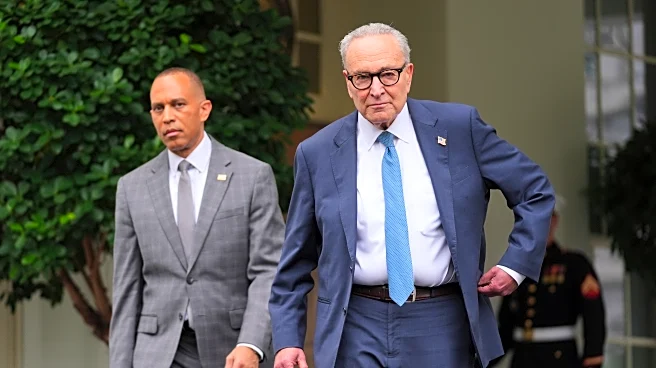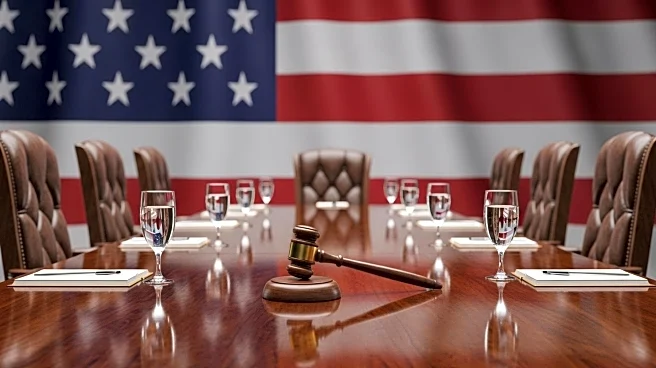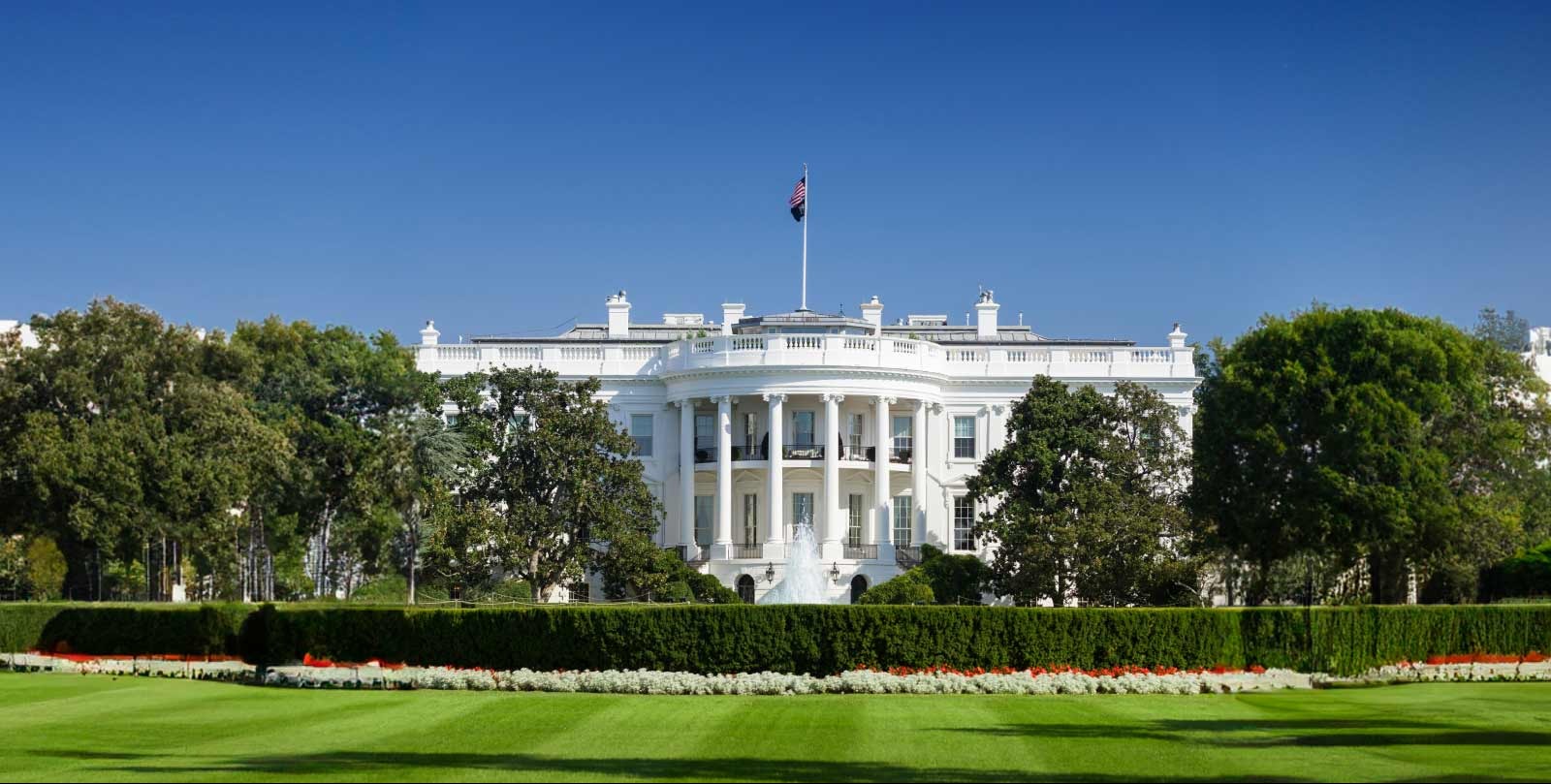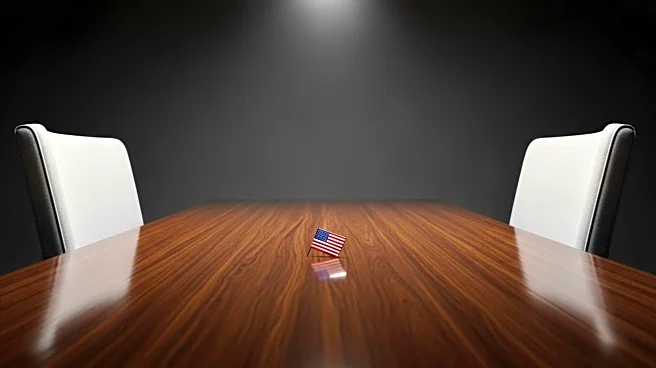What is the story about?
What's Happening?
Congressional leaders from both parties met with President Trump and Vice President JD Vance in a last-minute attempt to prevent a government shutdown. The meeting ended without a resolution, as the GOP refused to agree to Democrats' demands to attach health care provisions to the spending bill. Federal agencies are set to run out of money at midnight, leading to a shutdown. Senate Majority Leader John Thune plans to bring two proposals for votes, but both are expected to fail. The shutdown will affect various services across the country.
Why It's Important?
A government shutdown can have widespread impacts on public services, federal employees, and the economy. Essential services may continue, but many federal workers could face furloughs, and public programs might experience disruptions. The political standoff highlights deep divisions between parties, affecting public policy and governance. The inability to reach a consensus could lead to public dissatisfaction and impact future elections, as voters may hold leaders accountable for the impasse.
What's Next?
With the shutdown imminent, federal agencies will begin implementing contingency plans to manage essential services. Political leaders may face increased pressure from constituents and stakeholders to resolve the funding issue. The shutdown could lead to intensified negotiations, with potential compromises on spending and policy priorities. The impact on public services and employees may prompt calls for legislative reforms to prevent future shutdowns.
Beyond the Headlines
The shutdown underscores the challenges of bipartisan cooperation in a polarized political environment. It raises questions about the effectiveness of current legislative processes and the need for reforms to ensure government continuity. The situation may also influence public perception of political leaders and parties, affecting their strategies and priorities in upcoming elections.
AI Generated Content
Do you find this article useful?
